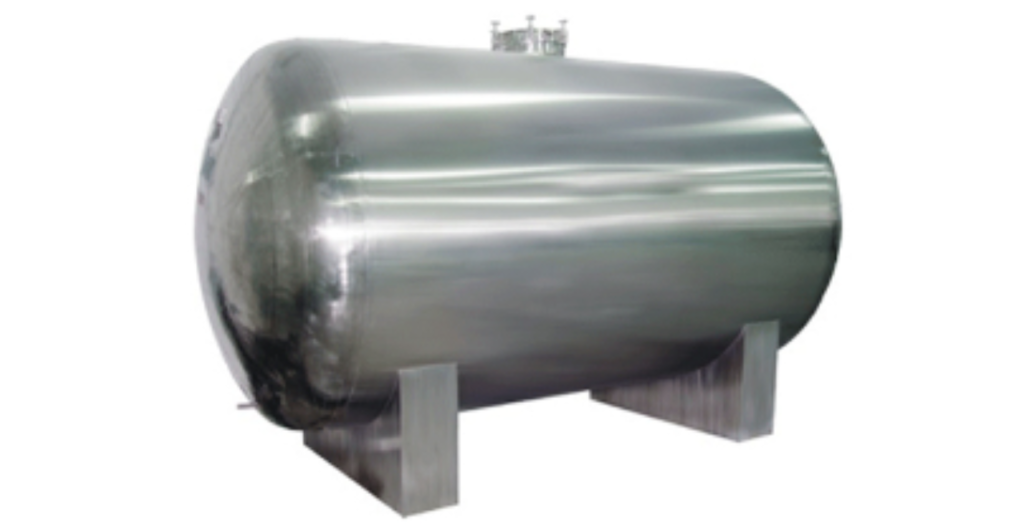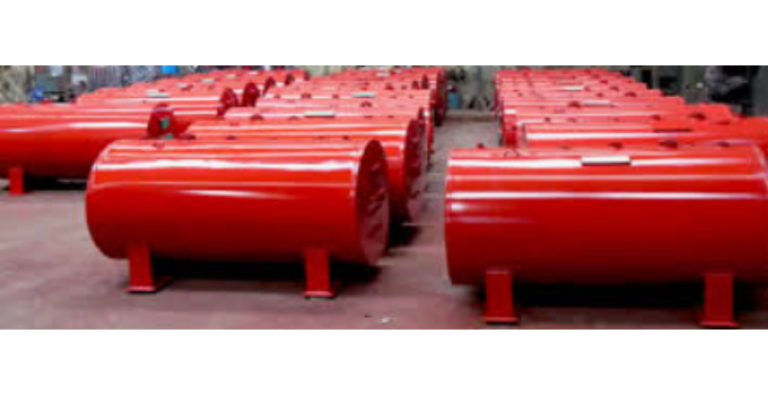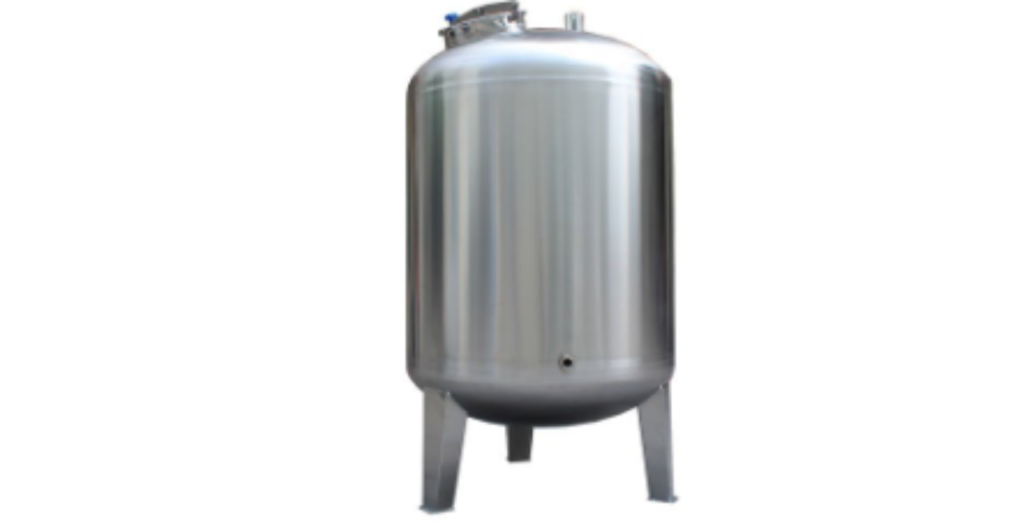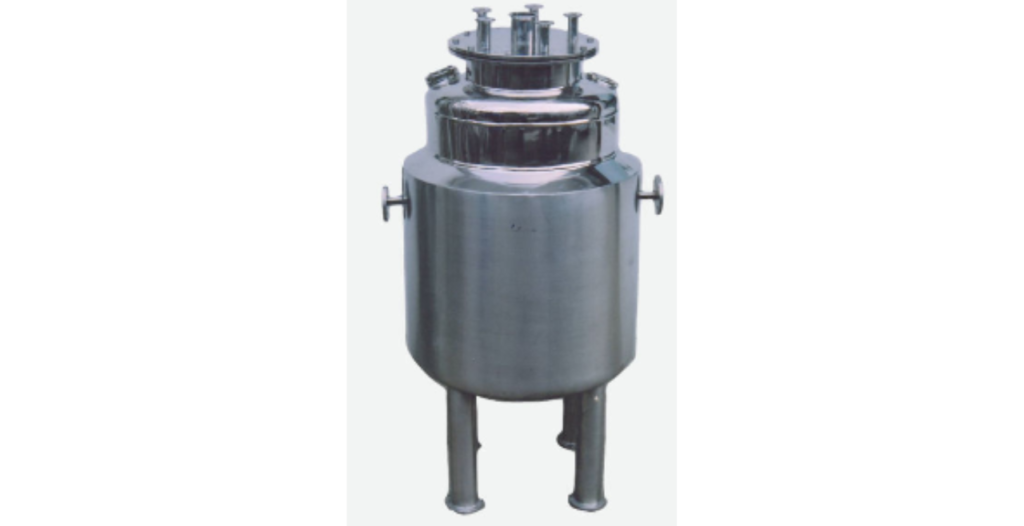STORAGE TANKS & VESSELS
| Storage tanks come in various types, each designed for specific applications and industries. The choice of storage tank type depends on factors such as the nature of the stored material, storage capacity, temperature requirements, and regulatory requirements. Here are some common types of storage tanks: |
| Aboveground Storage Tanks (ASTs): These tanks are located on or above the ground surface and are commonly used for storing liquids, such as petroleum products (e.g., gasoline, diesel), chemicals, and water. They are often made of steel and can have various configurations, including horizontal and vertical designs. |
| Underground Storage Tanks (USTs): USTs are buried below the ground surface and are used primarily for storing petroleum products, such as gasoline and heating oil. They are subject to strict environmental regulations to prevent soil and groundwater contamination. |
| Fixed Roof Tanks: These tanks have a fixed, non-removable roof and are used for the storage of liquids that do not produce significant vapor pressure changes due to temperature variations. Fixed roof tanks are often used for crude oil storage and other non-volatile materials. |
| Floating Roof Tanks: Floating roof tanks have a floating roof that rests on the surface of the stored liquid and moves up and down as the liquid level changes. They are commonly used for storing volatile liquids like gasoline and chemicals because the floating roof minimizes vapor emissions. |
| Cone Roof Tanks: These tanks have a conical-shaped roof and are suitable for storing materials that can be corrosive or viscous. They are commonly used in the chemical industry. |
| Dome Roof Tanks: Dome roof tanks have a rounded, dome-shaped roof that provides additional structural strength. They are used for a variety of materials, including petrochemicals and water. |
| Horizontal Tanks: Horizontal tanks are cylindrical storage tanks placed horizontally. They are used for storing liquids like water, diesel fuel, and chemicals and are often found in industrial settings. |
| Vertical Tanks: Vertical tanks are cylindrical storage tanks positioned vertically. They are used for a wide range of materials and are common in industries like agriculture, wastewater treatment, and chemical processing. |
| Pressure Vessels: Pressure vessels are designed to store materials under pressure. They are used in various industries, including chemical processing, pharmaceuticals, and power generation. Examples include boilers and compressed air tanks. |
| Silo Tanks: Silo tanks are tall, vertical storage tanks with a small footprint. They are typically used for bulk storage of dry materials, such as grains, cement, and plastics. |
| Double-Walled Tanks: These tanks have two walls with an interstitial space between them. They are used for storing hazardous materials to provide an additional layer of containment in case of leakage or spills. |
| LNG (Liquefied Natural Gas) Storage Tanks: These tanks are designed to store LNG, which is a cryogenic liquid. They have specialized insulation to maintain extremely low temperatures. |
| Water Tanks: Water storage tanks are used for storing potable water, firewater, and industrial process water. They come in various sizes and materials, including steel, concrete, and plastic. |
| Chemical Storage Tanks: These tanks are designed specifically for storing chemicals and are constructed from materials that are compatible with the stored chemicals. They may have specialized linings or coatings for corrosion resistance. |
| Septic Tanks: Septic tanks are used for the treatment and storage of wastewater from homes and businesses in areas not connected to a municipal sewer system. |
| These are some of the common types of storage tanks, but there are many variations and specialized designs based on specific applications and industry requirements. Proper selection, design, and maintenance of storage tanks are crucial to ensure the safe and reliable storage of materials. |

| Working Principles: Storage tanks are containers designed for the safe and efficient storage of various substances, including liquids, gases, and solids. The working principles of storage tanks involve the following key aspects: |
| Containment: The primary function of a storage tank is to contain and store the substance in a controlled manner. It prevents leaks, spills, and contamination. |
| Pressure Management: Some storage tanks, like those for gases, may need to manage pressure changes due to temperature variations or filling and emptying operations. This is achieved through pressure relief devices and venting systems. |
| Material Compatibility: Storage tanks are constructed from materials that are compatible with the stored substance. Compatibility considerations include resistance to corrosion, chemical reactions, and temperature variations. |
| Safety Features: Storage tanks often incorporate safety features such as overfill protection, leak detection systems, and emergency venting to prevent accidents and environmental harm. |

| Advantages: |
| Bulk Storage: Storage tanks allow for the efficient storage of large quantities of materials, making them essential for industries that require bulk storage, such as oil and gas, chemicals, and agriculture. |
| Convenience: They provide easy access for filling and withdrawing materials, simplifying distribution and use. |
| Environmental Protection: Properly designed and maintained storage tanks help prevent spills and leaks, reducing the risk of environmental contamination. |

| Disadvantages: |
| Maintenance: Storage tanks require regular inspection and maintenance to ensure their integrity. Neglected maintenance can lead to leaks, corrosion, and structural issues. |
| Cost: The design, fabrication, and maintenance of storage tanks can be costly, particularly for large-capacity tanks or those designed for specialized materials. |

| Applications: Storage tanks have a wide range of applications across various industries, including: |
| Petroleum and Oil Industry: For the storage of crude oil, refined products, and petrochemicals. |
| Chemical Industry: To store chemicals, solvents, and intermediates used in manufacturing processes. |
| Water Supply: For the storage of potable water, wastewater, and industrial process water. |
| Food and Beverage: In food processing for the storage of ingredients, beverages, and finished products. |
| Agriculture: For the storage of agricultural chemicals, fertilizers, and bulk grain storage. |
| Pharmaceuticals: To store raw materials, intermediates, and finished pharmaceutical products. |
| Environmental Protection: In wastewater treatment plants to store sludge, chemicals, and wastewater. |
| Energy Industry: For the storage of natural gas, liquefied natural gas (LNG), and other energy-related materials. |
| Construction: To store construction materials such as cement, asphalt, and aggregates. |

Capacity:
The capacity of a storage tank can vary widely depending on its purpose, design, and application. Storage tanks are used for a wide range of purposes, including storing liquids such as water, oil, gas, chemicals, and more. Here are some common types of storage tanks and their typical capacities:
Water Storage Tanks:
- Residential Water Tanks: These are often found in homes and typically have capacities ranging from a few hundred gallons to a few thousand gallons.
- Commercial/Industrial Water Tanks: These can have capacities ranging from thousands to millions of gallons, depending on their intended use.
Oil Storage Tanks:
- Residential Oil Tanks: In homes, oil tanks typically have capacities ranging from 250 to 1,000 gallons.
- Commercial/Industrial Oil Tanks: These can vary significantly in size, from thousands to millions of gallons, depending on the facility’s needs.
Gas Storage Tanks:
- Liquefied Petroleum Gas (LPG) Tanks: Common sizes for residential propane tanks range from 100 to 1,000 gallons. Commercial and industrial LPG tanks can be much larger.
Chemical Storage Tanks:
- Chemical storage tanks can vary widely in size based on the type of chemicals being stored, the facility’s needs, and safety regulations. They can range from small drums or barrels to massive tanks with capacities exceeding one million gallons in industrial settings.
Fuel Storage Tanks:
- Gasoline and Diesel Tanks: These can vary in size from small tanks at gas stations (typically a few thousand gallons) to large tanks at fuel depots or refineries with capacities in the hundreds of thousands or even millions of gallons.
Bulk Storage Tanks:
- Bulk storage tanks, used in industries like agriculture and food processing, can have enormous capacities, often exceeding a million gallons.
Storage Silos:
- Silos are used to store bulk materials such as grains, cement, or coal. Their capacities can range from a few hundred to several thousand cubic feet or more.
It’s important to note that the capacity of a storage tank is typically specified by the manufacturer or is determined based on the specific needs of the application. Safety regulations and environmental considerations also play a significant role in determining the size and design of storage tanks. Therefore, the capacity of a storage tank can vary widely, and you would need to provide more specific information about the type and purpose of the tank to determine its capacity accurately.

| Storage tanks Standard: Storage Tanks are subject to various standards and codes to ensure their safe design, fabrication, installation, inspection, and operation. These standards and codes are often developed and maintained by national and international organizations. The choice of applicable standards depends on factors such as the type of storage tank, the material it stores, its location, and the regulatory requirements of the region. Here are some of the commonly referenced standards and codes related to storage tanks: |
| API 650 – Welded Steel Tanks for Oil Storage: Published by the American Petroleum Institute (API), this standard is widely used for the design and construction of large, welded, aboveground storage tanks used in the petroleum and petrochemical industries. |
| API 620 – Design and Construction of Large, Welded, Low-Pressure Storage Tanks: Also published by API, this standard applies to the design and construction of large, low-pressure storage tanks, often used for liquefied natural gas (LNG) and other low-pressure applications. |
| ASME Boiler and Pressure Vessel Code (BPVC): The ASME BPVC contains several sections, including Section VIII for pressure vessels and Section XII for transport tanks, that are applicable to the design and construction of pressure vessels and tanks, including storage tanks. |
| API 653 – Tank Inspection, Repair, Alteration, and Reconstruction: This API standard provides guidelines for the inspection, repair, alteration, and reconstruction of aboveground storage tanks. It is essential for the maintenance and integrity assessment of existing tanks. |
| AWWA D100 – Welded Steel Tanks for Water Storage: Published by the American Water Works Association (AWWA), this standard provides specifications for the design and construction of welded steel tanks used for the storage of water. |
| NFPA 30 – Flammable and Combustible Liquids Code: Developed by the National Fire Protection Association (NFPA), this code provides safety guidelines for the storage and handling of flammable and combustible liquids, including requirements for tank design, installation, and maintenance. |
| EN 14015 – Specification for the Design and Manufacture of Site-Built, Vertical, Cylindrical, Flat-Bottomed, Aboveground, Welded, Steel Tanks for the Storage of Liquids at Ambient Temperature and Above: This European standard addresses the design and construction of aboveground storage tanks for liquids stored at ambient temperature or above. |
| UL 142 – Standard for Steel Aboveground Tanks for Flammable and Combustible Liquids: Published by Underwriters Laboratories (UL), this standard covers the design, construction, and testing of aboveground steel tanks used for the storage of flammable and combustible liquids. |
| ISO 1496 – Specification for Cylindrical Containers for Intermodal Transport: This international standard provides specifications for cylindrical containers used for the transport and storage of bulk materials, often in the form of ISO tank containers. |
| DOT (Department of Transportation) Regulations: In the United States, regulations set by the Department of Transportation apply to the transportation of hazardous materials, including tank trucks and railcars used for transporting liquids and gases. |
| It is essential to consult the relevant standards and codes that apply to your specific storage tank project and location. Compliance with these standards ensures the safety, reliability, and environmental integrity of storage tanks. Additionally, local and regional regulations may also impose additional requirements that must be met. |

| Stoarge Tanks MOC: |
| he Material of Construction (MOC) for storage tanks is a critical consideration when designing, fabricating, and selecting tanks for specific applications. The choice of MOC depends on various factors, including the type of substance to be stored, environmental conditions, temperature, pressure, and regulatory requirements. Here are common materials of construction for storage tanks and their key characteristics: |
| Carbon Steel: Carbon steel is a widely used material for storage tanks due to its strength and cost-effectiveness. However, it is susceptible to corrosion when exposed to certain substances, especially those with high acidity or alkalinity. Carbon steel tanks can be coated or lined to enhance corrosion resistance. |
| Stainless Steel: Stainless steel tanks are known for their excellent corrosion resistance, making them suitable for a wide range of applications, including the storage of chemicals, food products, and pharmaceuticals. Common stainless steel grades used include 304, 316, and 316L. |
| Summary: Storage tanks are essential components in various industries, providing a means for the safe and efficient storage of a wide range of substances. They offer advantages such as bulk storage, convenience, and environmental protection. However, they require regular maintenance and can be costly to design and maintain. Proper design, construction, and maintenance practices are crucial to ensuring the safe and reliable operation of storage tanks while minimizing environmental risks. |


 Sales & Marketing:
Sales & Marketing:  Service Supports:
Service Supports:  Website:
Website: 